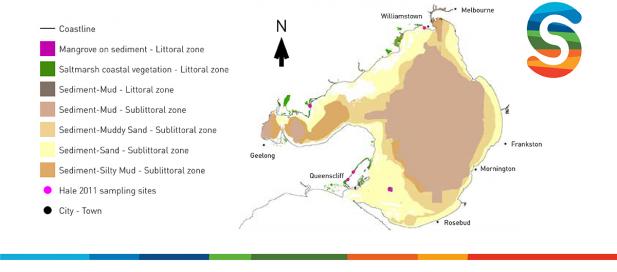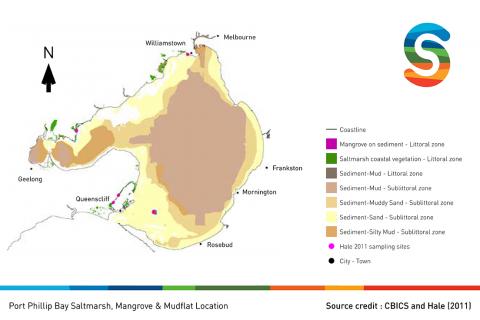
As part of our campaign to celebrate Victoria’s marine environment, this week we share some background on the intertidal habitats and dependent species of Port Phillip Bay and Western Port from the State of the Bays (SotB) 2016 report.
In the SotB 2016 report, you can find out more about saltmarsh and mangrove conditions as well as the status of key species including Port Phillip Bay’s foraging shorebirds (red-necked stint, curlew sandpiper and sharp-tailed sandpiper).
These intertidal zones provide important ecosystem services including filtration, roosting habitats, fish nurseries and erosion protection. Intertidal habitats are often found adjacent to human settlement, so not only are they our marine environment’s most visible assets – but also our most vulnerable, exposed to development pressures.
We invite you to review the Commissioner for Environmental Sustainability’s recommendations for further study to better understand the habitats and the ecosystems of Port Phillip Bay and Western Port. Compared with its state before European settlement, the SotB 2016 report found that Port Phillip Bay retained about 50% of its saltmarsh extent. During the same period, Western Port retained 90–95% of its mangrove habitat, and 90–95% of its saltmarsh extent.
The Habitats and their Dependent Species: Intertidal chapter included consideration of knowledge gaps for intertidal research for Port Phillip Bay and Western Port. Importantly, maintaining and building on the 2011 baseline map for intertidal habitats was recommended to help bay managers understand trends and manage the intertidal zone.

A better understanding of the impacts of climate change and sea level rise (particularly erosion) is critical, as well as the link between sediment delivery, surface elevation and the consequences for intertidal habitats.
We invite you to head to our interactive State of the Bays 2106 website here where you can also access the full scientific report – the next iteration of the report titled the Victorian State of the Marine and Coastal Environment 2021 report, will include an expanded scope and is currently being prepared by the Commissioner for Environmental Sustainability.
Quick fact
Did you know that Victoria is one of only two jurisdictions in Australia (the other being the ACT) with an independent Commissioner charged with periodic State of the Environment reporting? Read about Victoria’s Commissioner for Environmental Sustainability.
